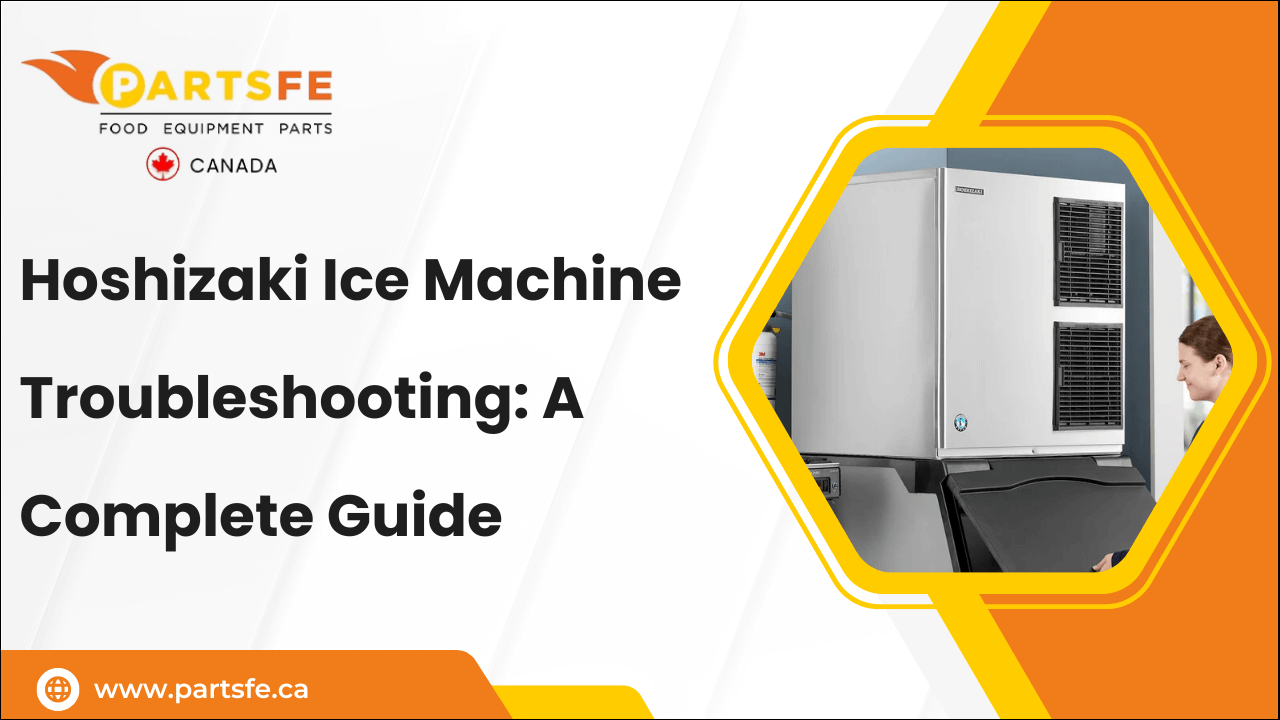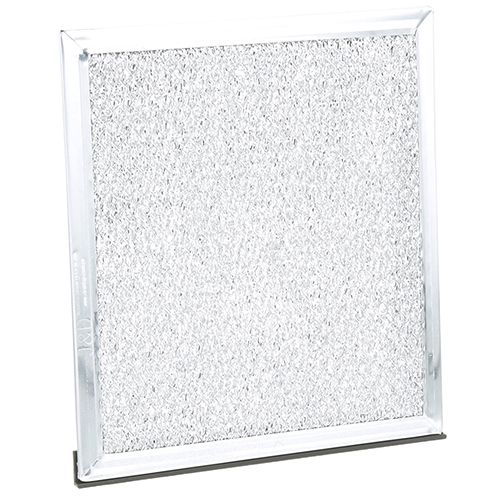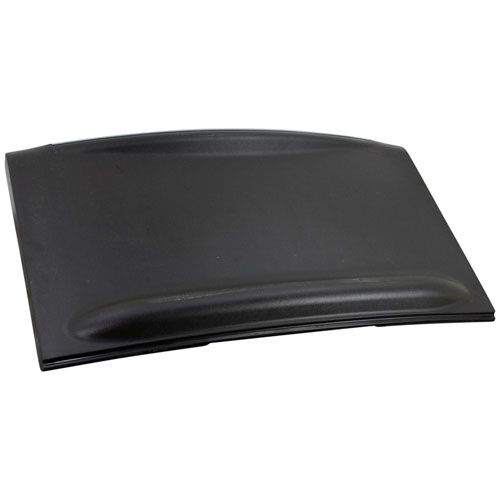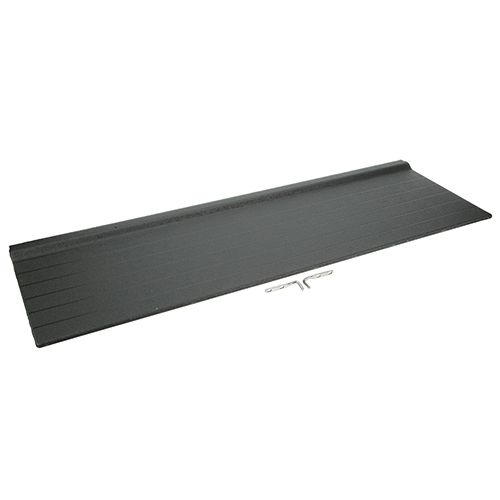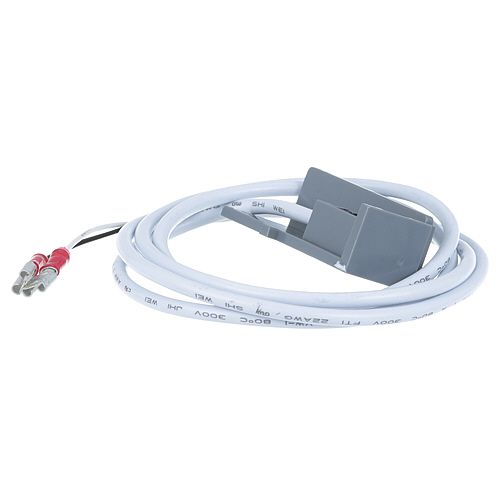Hoshizaki Ice Machine Troubleshooting: A Complete Guide
Hoshizaki ice machines are renowned for their reliability and consistent ice production, making them a staple in busy commercial settings such as restaurants, hotels, and healthcare facilities. Despite their durability, these machines can experience issues over time due to factors like wear and tear, water quality, and environmental conditions. Effective troubleshooting and regular maintenance help maintain peak performance and reduce the risk of expensive downtime. This comprehensive guide will walk you through how Hoshizaki ice machines operate, common problems to watch for, and effective solutions to keep your unit running smoothly. Additionally, you’ll learn how to interpret error codes and implement regular cleaning routines that extend the lifespan of your equipment, ensuring a steady supply of clean, high-quality ice at all times.
How a Hoshizaki Ice Machine Works
Understanding how a Hoshizaki commercial ice machine operates can help you troubleshoot and maintain it more effectively. Unlike traditional cube ice makers, Hoshizaki machines use a unique freezing process that produces high-quality crescent-shaped ice.
Here are the essential steps to follow:
-
Water Supply: The machine draws water from a connected source into its reservoir, ensuring a continuous flow for ice production.
-
Water Distribution: Water is pumped and sprayed evenly over a cold evaporator surface (typically a cylinder), where it freezes into thin layers.\
-
Freezing Cycle: As the water freezes, layers of ice form on the evaporator’s surface, gradually building the crescent-shaped ice pieces.
-
Harvest Cycle: Once the ice reaches the desired thickness, a brief warm gas cycle slightly heats the evaporator to loosen the ice.
-
Ice Release: The loosened ice naturally falls off the evaporator into the storage bin below, ready for use.
-
Recirculation: Any remaining water drains back to the reservoir to be reused in the next cycle, making the process efficient and water-conscious.
-
Automatic Controls: Sensors and control boards monitor temperature, water levels, and cycle timing to automate the entire process and maintain consistent ice production.
By cycling between freezing and harvesting phases, the Hoshizaki ice machine produces clear, dense ice efficiently while minimizing energy and water waste.
Having trouble with your ice machine and need the right parts to fix it? PartsFeCA has what you need, from water inlet valves, ice thickness sensors, to evaporator assemblies, all ready to help you get the job done. With parts available for brands like Hoshizaki, Manitowoc, and Scotsman, PartsFeCA makes it easier to find exactly what fits your machine.
Key Signs Your Hoshizaki Ice Machine Needs Troubleshooting
Monitoring for warning signs early on can help you address issues promptly and prevent major breakdowns or repair costs. Here are the real key signs that your Hoshizaki ice maker machine may need troubleshooting:
-
Reduced Ice Production: The machine produces less ice than usual or takes longer to complete ice cycles.
-
Small or Misshapen Ice Cubes: Ice cubes appear smaller, irregularly shaped, or have a cloudy, white appearance.
-
Ice Machine Not Making Ice: The machine stops producing ice altogether despite having power and a water supply.
-
Water Leaks: Visible water pooling around or under the unit, indicating possible drainage or internal leaks.
-
Frequent Shutoffs or Cycling: The machine turns off and on repeatedly or runs shorter or longer cycles than normal.
-
Error Codes or Warning Lights: Display panels show blinking lights, error beeps, or specific error codes.
-
Ice Clumping or Freezing Together: Ice cubes stick together in the bin, signaling potential temperature or harvesting issues.
-
Excessive Water Usage: Noticeably higher water consumption than usual, which could indicate leaks or malfunctioning valves.
If you notice any of these signs, it’s important to inspect your machine promptly or call a professional technician to prevent further damage.
Troubleshooting Common Hoshizaki Ice Machine Problems
Effective Hoshizaki ice machines troubleshooting is essential for identifying and resolving common issues quickly. These steps can help maintain efficiency and prevent costly repairs.
Safety Tips Before You Begin:
-
To prevent electric shock, make sure to unplug the ice machine before starting any inspection or maintenance work.
-
Use protective gloves when handling ice or machine components to prevent injury.
-
Prevent damage or short circuits by keeping electrical parts away from water.
Ice Machine Not Making Ice
The machine fails to produce any ice despite being powered on and connected to water.
Symptoms:
-
No ice in the storage bin
-
Machine sounds normal, but no ice is produced
-
Display panel shows no error, but no activity
Possible Causes:
-
Electrical power problems
-
Water supply is shut off or has insufficient pressure
-
Faulty float switch
-
Frozen evaporator or refrigeration failure
How to Troubleshoot:
-
Verify the Power Supply: Make sure the machine is plugged in, circuit breakers are intact, and the unit is receiving power.
-
Verify Water Supply: Confirm that the water valve is open and water pressure meets manufacturer specifications.
-
Inspect Float Switch: Test the float switch for proper operation and replace if stuck or broken.
-
Defrost Evaporator: If frozen, turn off the machine and allow the evaporator to thaw completely before restarting.
Water Leaking from Machine
Water pools around or under the ice machine.
Symptoms:
-
Visible water puddles beneath or around the unit
-
Excess moisture inside the machine cabinet
-
Possible dripping sounds during operation
Possible Causes:
-
Blocked or disconnected drain line
-
Faulty Hoshizaki ice machine water pump
-
Overfilling reservoir
-
Damaged or loose tubing
How to Troubleshoot:
-
Clear Drain Lines: Inspect and remove any clogs or kinks in the drain line to ensure proper drainage.
-
Test Water Pump: Check pump operation and replace if it’s leaking or not circulating water.
-
Check Water Level: Inspect the float switch and valves to ensure the reservoir isn’t overfilling.
-
Secure Tubing: Tighten or replace any loose, cracked, or damaged tubing connections.
Ice Clumping or Freezing Together
Ice cubes stick together in the storage bin, forming large clumps.
Symptoms:
-
Ice cubes stuck together in large chunks
-
Difficult to scoop individual ice cubes
-
Ice may appear wet or partially melted
Possible Causes:
-
High bin temperature
-
Poor airflow around the bin
-
Defective thermostat or sensor
How to Troubleshoot:
-
Lower Bin Temperature: Adjust thermostat settings or improve cooling around the bin.
-
Improve Airflow: Remove objects blocking vents and ensure the machine has enough space for ventilation.
-
Test Sensors: Inspect thermostat and temperature sensors and replace if faulty.
Strange Noises During Operation
Unusual sounds such as buzzing, grinding, or clicking are heard from the machine.
Symptoms:
-
Loud buzzing or humming noises
-
Grinding or scraping sounds
-
Intermittent clicking or rattling
Possible Causes:
-
Worn fan motor bearings
-
Loose panels or screws
-
Ice obstructing fans
How to Troubleshoot:
-
Inspect and Replace Fan Motor: Listen closely to fans and replace motors with worn bearings.
-
Secure Panels: Inspect and tighten any loose panels or screws that might be causing vibrations.
-
Clear Ice Buildup: Remove any ice that might be blocking the fan blades or airflow.
Check out our guide on how to troubleshoot common issues with Manitowoc ice machines to quickly identify problems and keep your equipment running smoothly.
Error Codes in Hoshizaki Ice Machines
Ice machines display error codes to help you identify problems early. If your Hoshizaki ice machine is beeping, it could indicate one of these common error codes. Here are the signs, issues, and fixes for these errors:
E1: Long Freeze Cycle
Sign: Ice production is slower than usual.
Issue: The freezing cycle takes longer than normal due to low water supply or high ambient temperature.
Fix:
-
Check Water Supply: Ensure water supply is steady and meets pressure requirements.
-
Control Temperature: Keep the ambient temperature below 90°F.
-
Clean Filters: Clean water filters if clogged.
E2: Long Harvest Cycle
Sign: Ice takes too long to drop into the bin.
Issue: The harvest cycle is extended because the harvest valve is malfunctioning or the evaporator is dirty.
Fix:
-
Inspect Harvest Valve: Inspect and test the harvest valve for proper operation.
-
Clean Evaporator: Clean the evaporator plate to remove scale and buildup.
E3: Short Freeze Cycle
Sign: Ice is under-formed, or production stops prematurely.
Issue: The freeze cycle ends too soon due to a faulty thermistor sensor or Hoshizaki ice machine control board problems.
Fix:
-
Test Thermistor: Test the thermistor sensor for accuracy.
-
Check Control Board: Inspect the control board and replace it if defective.
E4: High Discharge Temperature
Sign: The machine is unusually hot or shuts down unexpectedly.
Issue: Overheating caused by dirty condenser coils or low refrigerant levels.
Fix:
-
Clean Coils: Clean the condenser coils thoroughly.
-
Recharge Refrigerant: Have a professional check and recharge refrigerant if needed.
E7: Low Water Level
Sign: Ice machine stops or produces no ice.
Issue: The water float switch is dirty or malfunctioning, causing inaccurate water level detection.
Fix:
-
Clean Float Switch: Clean the water float switch.
-
Replace Float Switch: Replace the float switch if it’s faulty.
E8: High Evaporator Temperature
Sign: Ice melts quickly or is soft.
Issue: High evaporator temperature due to compressor issues or refrigerant leaks.
Fix:
-
Check Sensors: Inspect and test the evaporator temperature sensors for faults.
-
Improve Refrigeration: Ensure the refrigeration system is working properly; call a technician if necessary.
-
Enhance Airflow: Make sure vents and fans are clean and unobstructed to allow proper airflow.
Check the Hoshizaki ice machine beep codes if your machine is displaying error codes for quick troubleshooting. Promptly addressing issues helps maintain smooth operation and prevents future breakdowns.
Cleaning and Maintenance for Your Hoshizaki Ice Machine
Regular cleaning your Hoshizaki ice machine and maintenance are essential to keep it working efficiently and ensure food safety compliance. Below is a detailed checklist with clear headings for each cleaning task:
Daily Maintenance
-
Check and Empty Ice Bin: Ensure the ice bin is emptied if not in use to prevent old ice from contaminating fresh batches.
-
Wipe Down Exterior Surfaces: Clean the exterior with a mild disinfectant to remove dust, fingerprints, and prevent bacterial buildup.
Weekly Maintenance
-
Clean the Air Filter and Condenser Coil: Remove dust and debris from the air filter and condenser coil to maintain proper airflow and cooling efficiency.
-
Inspect and Replace Water Filters if Needed: Check the water filters regularly and replace them if clogged or dirty to ensure a clean water supply.
Monthly or Quarterly Maintenance
-
Descale the Evaporator Plate: Use a manufacturer-approved descaling solution to remove mineral buildup from the evaporator plate, which can affect ice production.
-
Sanitize Internal Components: Apply a food-safe sanitizer to internal parts to eliminate bacteria and ensure hygiene.
-
Flush and Clean Water Lines: Flush the water system to remove sediment and prevent clogging or bacterial growth inside water lines.
Annual Maintenance
-
Check by a Certified Technician: Arrange for a thorough inspection of all mechanical and electrical parts for signs of wear.
-
Replace Aging or Damaged Components: Proactively swap out Hoshhizaki ice machine parts showing wear to prevent sudden failures.
To ensure your ice machine runs smoothly, regular cleaning and maintenance are essential. Using a Hoshizaki ice machine descaler helps maintain optimal performance and prevent issues.
Check out this guide on how to effectively clean and maintain your Hoshizaki ice machine to ensure optimal performance and extend its lifespan.
Tips to Prevent Future Hoshizaki Ice Machine Problems
Hoshizaki ice machine maintaining is key to avoiding frequent breakdowns and ensuring optimal performance. Implement these easy tips to keep your machine in top shape.
-
Regular Cleaning: Clean the ice machine’s interior, evaporator, and water reservoir at least every 3-6 months to prevent scale buildup and bacteria growth.
-
Change Water Filters Frequently: Replace water filters according to manufacturer recommendations to ensure a clean water supply and reduce clogging.
-
Monitor Water Supply: Ensure the machine is connected to a steady, clean water source with adequate pressure to avoid interruptions in ice production.
-
Maintain Proper Ambient Temperature: Install the machine in a well-ventilated, temperature-controlled area, ideally below 90°F, to prevent overheating and mechanical stress.
-
Inspect and Test Sensors Regularly: Periodically check temperature sensors, float switches, and control boards for proper operation to catch faults early.
-
Follow Manufacturer’s Instructions: Always stick to the user manual for proper operation, cleaning, and part replacement procedures.
-
Promptly Address Error Codes: Don’t ignore error messages; investigate and resolve issues early to prevent further damage.
Conclsuion
A well-maintained Hoshizaki ice machine delivers reliable ice production and long-term performance. Staying alert to early signs of trouble, such as slow cycles or inconsistent ice, helps prevent bigger issues. Understanding and addressing error codes quickly can minimize downtime and costly repairs. Regular cleaning, proper filtration, and scheduled maintenance, including ice thickness adjustments, all play a critical role in keeping the machine efficient. Training your staff on basic care and troubleshooting adds another layer of protection. With consistent upkeep and attention, your Hoshizaki ice machine will serve your business smoothly and dependably.
FAQS
How do you reset a Hoshizaki ice maker?
To reset a Hoshizaki ice maker, unplug the unit for about 5 minutes, then plug it back in. This clears error codes and restarts the system.
What does it mean when a Hoshizaki ice machine beeps?
A beeping sound indicates an issue or warning, like a blocked filter or a limited water supply. Check the display panel for error codes to identify the issue.
Why is my Hoshizaki ice machine on but not making ice?
The machine might have water supply issues, a dirty condenser, or a faulty thermostat. Examine these parts and make any necessary cleaning or repairs.
What is the life expectancy of a Hoshizaki ice machine?
A Hoshizaki ice maker can last 10 to 15 years if it is properly maintained. Its lifespan can be increased with timely repairs and routine cleaning.

